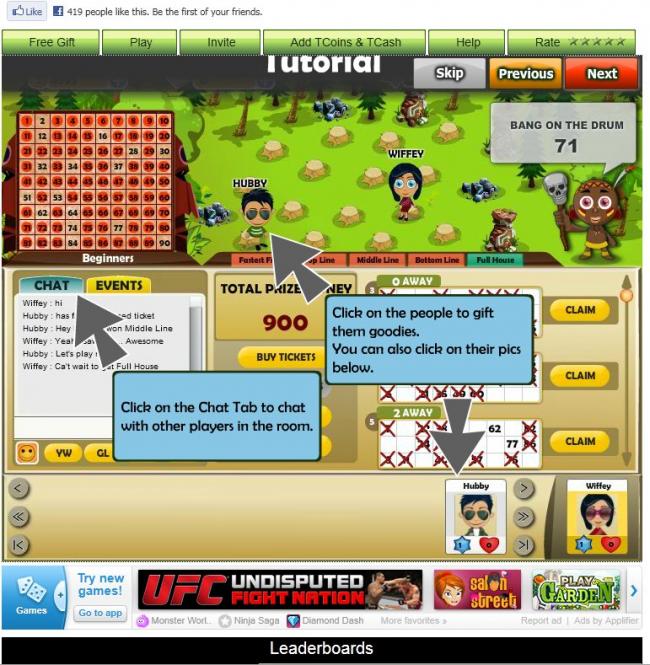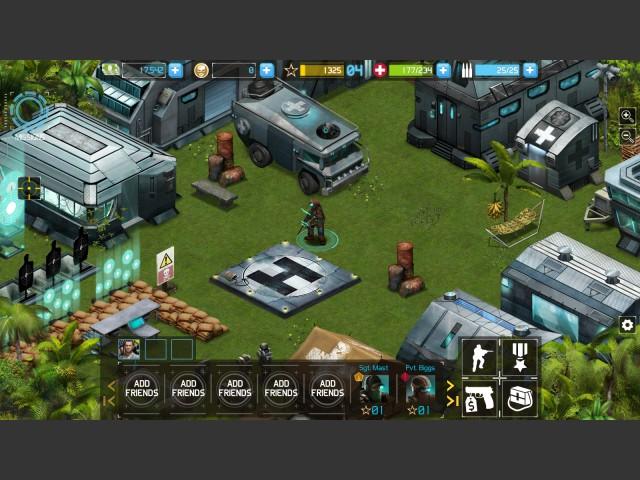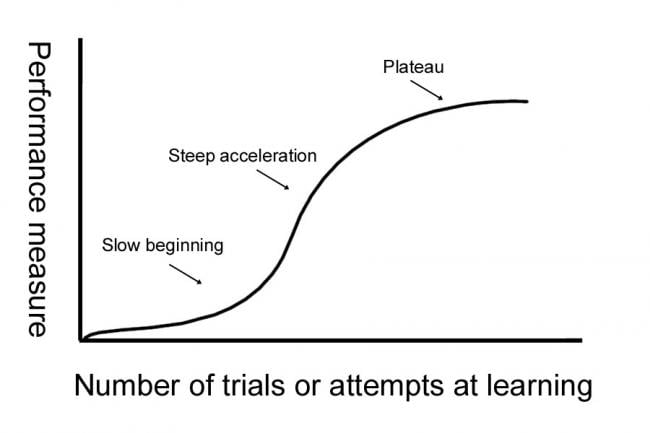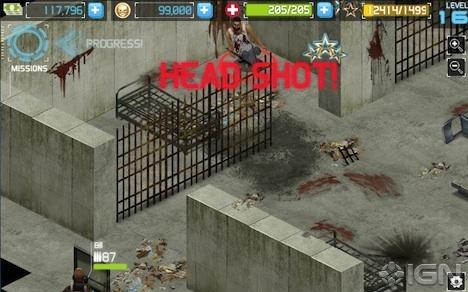- Wondering how to get Monopoly GO! free rolls? Well, you’ve come to the right place. In this guide, we provide you with a bunch of tips and tricks to get some free rolls for the hit new mobile game. We’ll …
Best Roblox Horror Games to Play Right Now – Updated Weekly
By Adele Wilson
Our Best Roblox Horror Games guide features the scariest and most creative experiences to play right now on the platform!The BEST Roblox Games of The Week – Games You Need To Play!
By Sho Roberts
Our feature shares our pick for the Best Roblox Games of the week! With our feature, we guarantee you'll find something new to play!Type Soul Clan Rarity Guide – All Legendary And Common Clans Listed!
By Nathan Ball
Wondering what your odds of rolling a particular Clan are? Wonder no more, with my handy Type Soul Clan Rarity guide.
Girls just want to have guns: Ghost Recon Commander and the art of helping Facebook games grow up
Just last month, a new Ghost Recon game came out. Not only did it take the most risky approach yet to the long-standing stealth-action franchise, but it managed – against a deluge of other releases – to stand out as something totally unique. In some respects, you could argue that it charted a new course for its platform. Oh, and I forgot to mention: I’m talking about the one for Facebook

Just last month, a new Ghost Recon game came out. Not only did it take the most risky approach yet to the long-standing stealth-action franchise, but it managed – against a deluge of other releases – to stand out as something totally unique. In some respects, you could argue that it charted a new course for its platform. Oh, and I forgot to mention: I’m talking about the one for Facebook.
By all accounts, Ghost Recon Commander appears at first glance as if it’s doing what every other highly branded Facebook title is doing: promoting its console big brother. One look under the hood, however, and we discovered something deceptively deep. A story-driven adventure filled with genuine play. A game which hummed along entertainingly if you drove it with standard points and clicks, but which the strategy-hound could give themselves to and feel rewarded.
Was this it? The Facebook game for core gamers and casual gamers alike? And more importantly, what had taken so long?
“The challenge is that [everything] has to be done in incremental steps,” reflects Commander’s lead designer and Loot Drop COO Brenda Garno. Like her game, it seems there’s much more going on under the hood of Facebook’s design scene than anyone might realize. “If you decide ‘Hey! We’re changing everything because this is the way it should be,’ You are going to lose the 100 Million Facebook players who get the way that it is now.”

The way it is now. Since the advent of Facebook’s gaming platform in 2008, the very definition of “game” has shifted. Like the Wii to the console playing masses, the social giant’s platform for play offered the chance to sit down with a video game to demographics who might otherwise never have touched them. And soon enough, developers were hand-crafting experiences catered to the compulsions of those wanted from their video games the same feeling they wanted from aimlessly checking their friend’s (and enemies) photos. Gratifying routine. And in turn? Players demanded more: with their time, with their wallets, and with their devotion.
Suddenly, a new market had been born. A market where monetization and analytics were designed first, and animation later as a skin for the money-making engine beneath. A market where virality wasn’t a medical warning, but a creed by which a game lived and died. (Here Garno insists unapologetically: “you know what, whoever gave it the name viral should just be ejected from the game industry entirely”). We had entered the era of the dangling carrot. Invite a friend to build your barn faster! Tell a hundred people you need hay or we’ll kill your sister. But its gamers – by in large – knew nothing else. And they loved it.
For Garno, this self-feeding cycle was the uphill battle facing Loot Drop when they began designing Ghost Recon Commander. Designing it as a spectacular game first, and an analytics engine second.

“Those who take big steps with a group of 100 million people, many of whom are just entering games? They risk losing those people. The learning curve of the Facebook player is probably the greatest learning curve we have ever seen.” This hit home for the team at Loot Drop early in their attempts at making Commander a tactical shooter for the browsers. “In the early version, I had line of sight in there. We’d let players know, ‘you can only see what your ghost [soldier] can see!’
“And across the board, these casual players would read the line of sight message, and then they’d get in there and they’d say ‘hey, where did that guy come from! He wasn’t there before. This game is cheating.’ And it didn’t matter; they just didn’t get it. As hardcore gamers we had learned line of sight in second grade, and we totally [took] it for granted. And yet this was a concept that was foreign enough that we literally just removed the line of sight play in recruit mode.”
For many developers, this might have been the tipping point. The confirmation necessary to start designing for the casual player. Regroup and focus on sending players uniforms as gifts and inviting your friends for more training stamina. Hearing Garno, tell it, the takeaway was something entirely different.

“It was a challenge. But I couldn’t help but think to myself, this was a group of people for whom if you said experience levels, they would often say, ‘What?’ just 3 years ago. And in that time, this group of people has learned what experience levels mean, what experience points mean, what achievements mean, what PvP play is, what asynchronous play is. They’ve learned difficulty curves, and game economies, and how to make items work together.” Perhaps, thought Garno, they could be fed combat strategy in a pill they recognized.
For a moment I’m given pause. What about the core players, I ask her? This is the Ghost Recon license after all; if they were setting out to make it Facebook friendly, weren’t they catching themselves between a rock and a hardcore fan?
“I wasn’t on a mission to find every hardcore gamer I could and convince them that this is a game worth playing. Because by doing that, I’m wasn’t going to make the type of game I wanted to create. And I can’t tell you how many times in my career I’ve heard ‘oh, violent video games, I hate violent video games!’ and I would look at people, and think, ‘oah woah woah!’ They’re not all violent. In fact, M rated video games on average make up 8% of all video games. And I would say that this feeling towards ‘core games’ persisted a hell of a lot longer than the feeling that Facebook games are all light and casual. So absolutely, it was an uphill battle, but I think the battle for me was best fought by trying to make a game that could appeal to all sides.”

For Garno and team, catering to everyone meant catering to the game above everything else. “Our guiding question was, ‘if we do this thing, how does this make the game better?’ I don’t want to do things just because everyone else does, which I think a lot of Facebook games do. The idea to go visit somebody’s base camp and get five dollars, or click on a few things for one reason or another, that was adding nothing to the gameplay. That felt wrong.”
And so at every stage of development, Loot Drop worked at finding what Garno painted for me as the unexplored middle ground. The way to deliver features worthy of the Ghost Recon franchise – that players would “spend 180 hours exploring” – inside a framework that Facebook players were used to. Keep options tabs on the side and energy bars at the top, but come up with a novel use for your recharging resource: bullets. Allow players to build a base camp that was visually their own and skirted the line of feeling like SoldierVille, but which didn’t have any cool down times for structures. Instead, structures worked like RPG equipments, and player stats actually mattered.
“It’s not like there’s this little fake person who’s coming to your place and supposedly doing things,” says Garno. Here she seems enthusiastic, like a child describing a science experiment. “You’re really hiring this character I’ve taken the time to build, because I’ve got a base camp and I’ve buffed [up] my character, you’re getting all the advantages of that effort; you’re paying to be able to use me as a mercenary on your missions. I like the feel that I know that what I’m doing affects others.”
In the great argument between core players and “casuals,” Loot Drop is taking the road less travelled: asking both parties to meet each other in the middle.
More articles...
Monopoly GO! Free Rolls – Links For Free Dice
By Glen Fox
Wondering how to get Monopoly GO! free rolls? Well, you’ve come to the right place. In this guide, we provide you with a bunch of tips and tricks to get some free rolls for the hit new mobile game. We’ll …Best Roblox Horror Games to Play Right Now – Updated Weekly
By Adele Wilson
Our Best Roblox Horror Games guide features the scariest and most creative experiences to play right now on the platform!The BEST Roblox Games of The Week – Games You Need To Play!
By Sho Roberts
Our feature shares our pick for the Best Roblox Games of the week! With our feature, we guarantee you'll find something new to play!Type Soul Clan Rarity Guide – All Legendary And Common Clans Listed!
By Nathan Ball
Wondering what your odds of rolling a particular Clan are? Wonder no more, with my handy Type Soul Clan Rarity guide.







